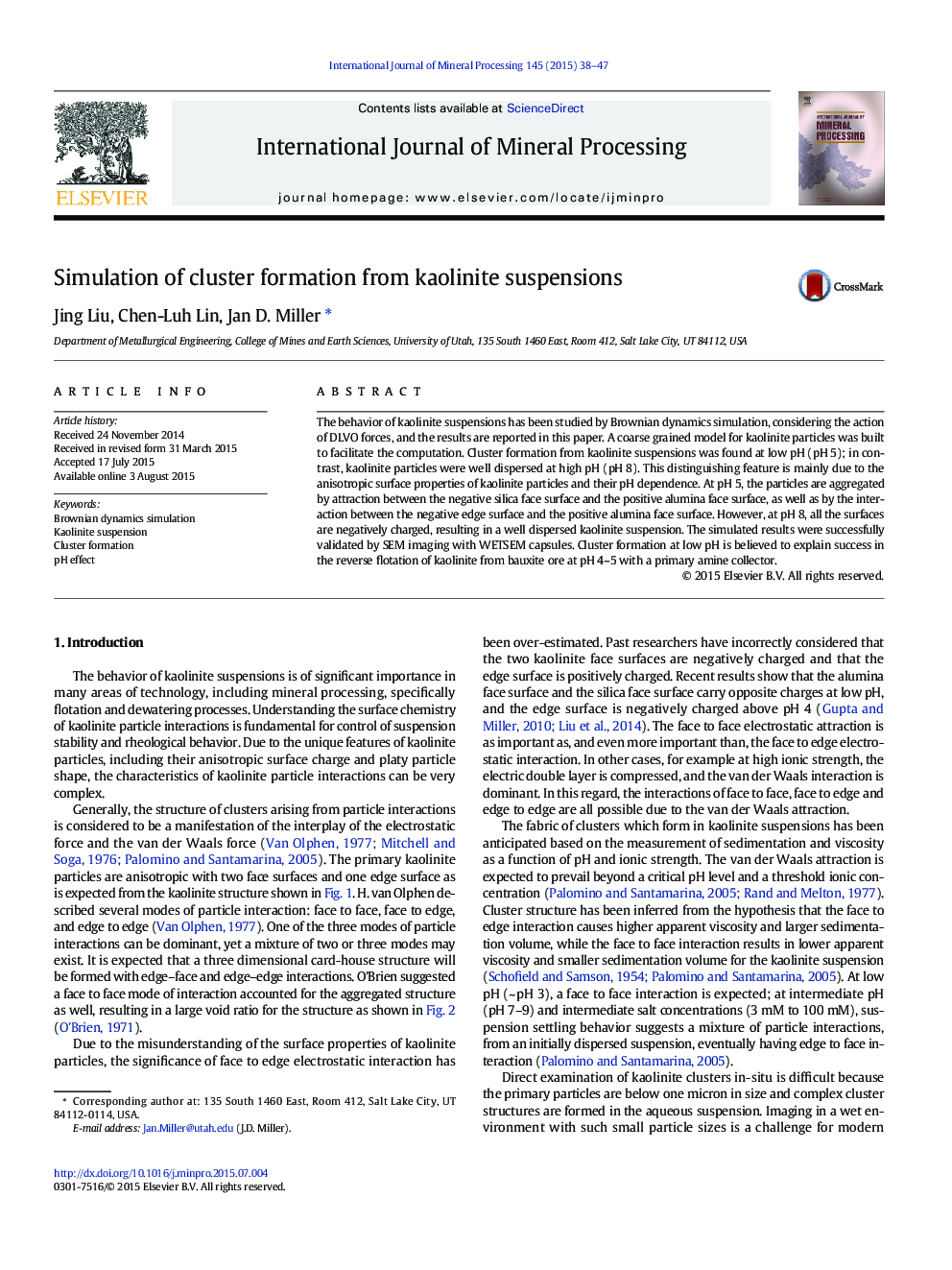| Article ID | Journal | Published Year | Pages | File Type |
|---|---|---|---|---|
| 213847 | International Journal of Mineral Processing | 2015 | 10 Pages |
•A coarse grained model was built to simulate the formation of kaolinite clusters.•Modes of primary particle interaction are identified during cluster formation.•Cluster size, shape, and composition are described.
The behavior of kaolinite suspensions has been studied by Brownian dynamics simulation, considering the action of DLVO forces, and the results are reported in this paper. A coarse grained model for kaolinite particles was built to facilitate the computation. Cluster formation from kaolinite suspensions was found at low pH (pH 5); in contrast, kaolinite particles were well dispersed at high pH (pH 8). This distinguishing feature is mainly due to the anisotropic surface properties of kaolinite particles and their pH dependence. At pH 5, the particles are aggregated by attraction between the negative silica face surface and the positive alumina face surface, as well as by the interaction between the negative edge surface and the positive alumina face surface. However, at pH 8, all the surfaces are negatively charged, resulting in a well dispersed kaolinite suspension. The simulated results were successfully validated by SEM imaging with WETSEM capsules. Cluster formation at low pH is believed to explain success in the reverse flotation of kaolinite from bauxite ore at pH 4–5 with a primary amine collector.
Graphical abstractFigure optionsDownload full-size imageDownload as PowerPoint slide
